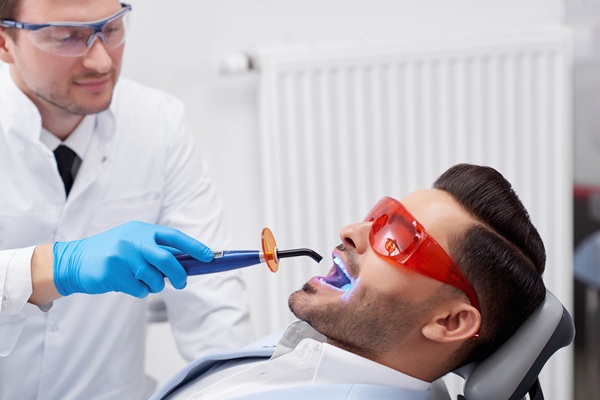How Long is the Dental Sealant Procedure?

Brushing, flossing, using fluoride, and eating a healthy diet are all proven methods of fighting cavities. However, sometimes a dental sealants is needed to help prevent plaque from forming in the uneven pits and fissures that exist on teeth, particularly molars that are naturally rough and uneven. Sealants are a thin coating made of plastic or other protective material that covers the back teeth's chewing surfaces. A dental sealant serves as a sort of raincoat that protects the teeth from acidic bacteria that can cause cavities.
How are dental sealants applied?
The process of applying sealants is fast and painless, requiring only a few minutes of time with the dentist or dental hygienist. While the procedure may vary depending on the manufacturer and type of sealant, the basic procedures for the application of resin sealants are as follows.
Gathering the needed materials
The dentist or hygienist will assemble a tray with needed equipment, instruments, and supplies, which may include articulating paper, cotton rolls, a curing light, an explorer device, a mirror, pliers, a saliva ejector, a syringe, and a toothbrush.
Cleaning and examining the tooth
Prior to applying the dental sealant, the tooth must be cleaned thoroughly. This may be completed with hydrogen peroxide, a toothbrush, or a jet. The surface of the teeth is rinsed carefully and examined to ensure all debris has been removed. The tooth must be free of existing decay prior to the application of the sealant; if decay is present on the tooth, the decision to use sealant should be reconsidered.
Isolating the surface of the tooth
For the proper placement and adherence of sealants, the tooth's surface must be free of existing saliva or debris. Dental sealant retention problems are usually the result of moisture or contamination from saliva. A rubber dam, cotton rolls, or dry field pads or kits may be used to prevent moisture from interfering with the application process.
Etching the tooth
Conditioning the tooth, also known as etching, is completed with the use of phosphoric acid, which kills bacteria and roughens the surface of the tooth to make it easier for the dental sealant to adhere when it is applied. This quick and painless process takes no more than 30 seconds to complete.
Rinsing and drying the tooth
The tooth's surface must be thoroughly rinsed with water to remove all traces of acid left from the etching process. Air and suction is used to completely dry the tooth.
Applying and curing the primer and sealer
The sealant material may be placed directly on the tooth or on top of an optional primer to help with the adhesion. Some types of sealants must be mixed prior to applying. The sealant must sit for 10 to 20 seconds prior to curing. The curing process takes approximately 30 seconds with concentrated visible light, which is needed for the dental sealant material to set.
Conclusion
The process of applying dental sealant is simple and pain free. The dentist or hygienist only needs a few minutes to complete the application process for each tooth, and the resulting level of protection against cavities is well worth the time and effort.
If you are interested in learning more about the process or benefits of dental sealants, please contact our office today.
Check out what others are saying about our dental services on Yelp: Dental Sealants in Pataskala, OH.
Related Posts
Dental sealants are an effective preventive treatment against tooth decay that are commonly associated with children and young adults. But what about adults? Continue reading to learn about dental sealants for adults and the purpose the treatment serves.Tooth decay and gum disease are the major causes of tooth loss in adults. The two conditions are…
Dental sealants are a great protective option for patients of all ages. Family dentists typically administer them to children as a way to prevent tooth decay, but adults can also benefit from these preventive measures. This simple procedure can be done in less than an hour, and the results tend to last for a few…
Preventative dentistry involves you keeping your teeth and gums healthy by taking actions that will protect against dental problems like tooth decay, gum disease, and enamel loss. Tooth decay and gum disease are two of the most common dental issues that people seek care for, yet both are preventable.Things like daily oral hygiene and teeth…
Your Kid friendly dentist understands how difficult it is to motivate kids to brush their teeth. Children often think of brushing as a tiring activity. Proper motivation can help them form this healthy habit. If you want to give your kids stronger reasons to brush, here are some details from a kid friendly dentist.Brushing two…
